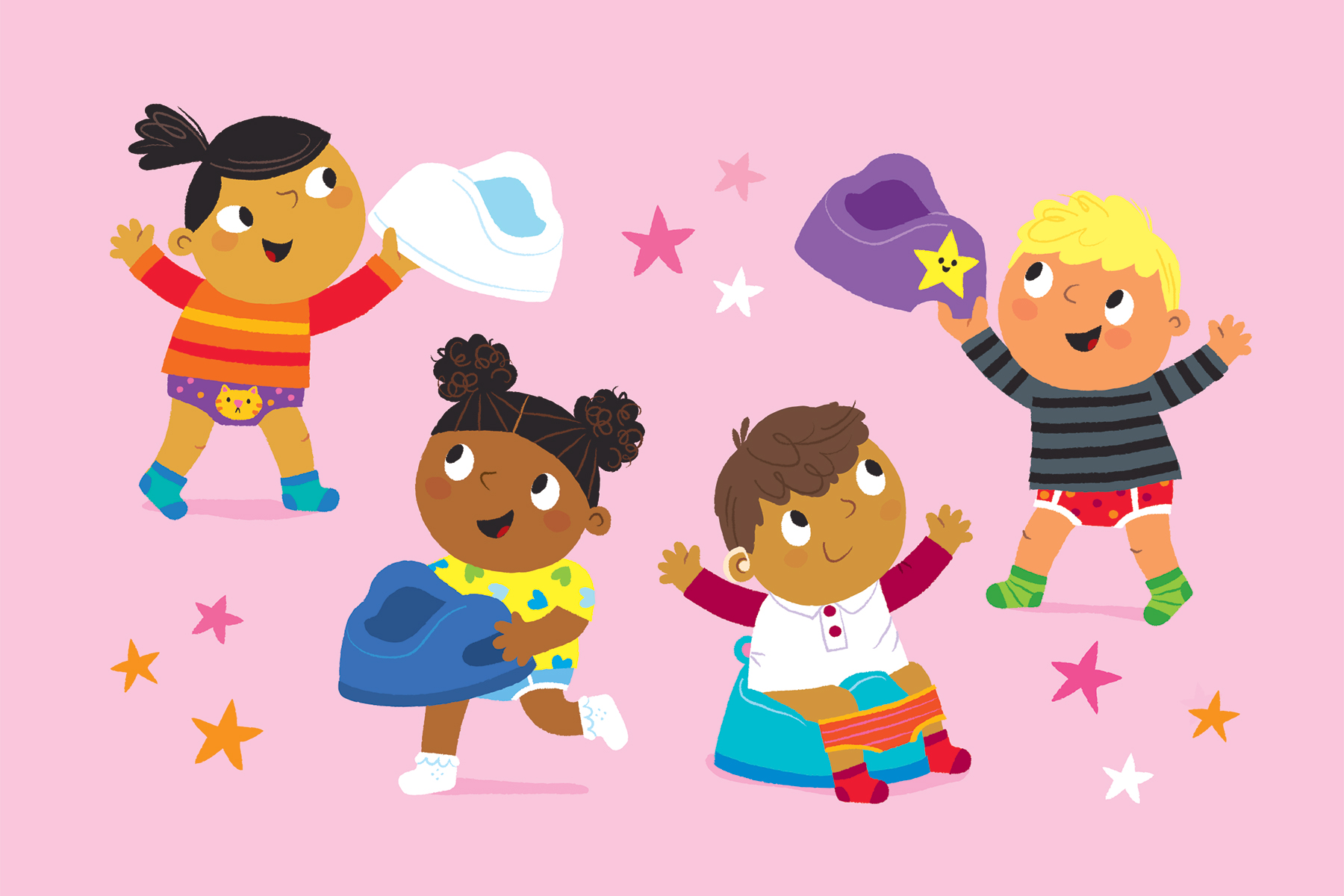- Home
- Discover
- Childrens articles
- 8 common myths around potty training
8 common myths around potty training

There are many misconceptions around potty training and when it’s your first time teaching your little one how to use the loo, it can all feel very overwhelming. So, we spoke to toilet training expert Amanda Jenner and asked her to help us flush out the myths.
1. Put your baby on the potty and they’ll figure it out
A common myth, but this is certainly not the case! Toddlers have been in nappies for many years and will not understand or connect with a potty straight away. The truth is you must introduce a potty to them first, explain what it is, and keep them practising sitting on it so they understand what they must do. It can take time for them to make the change from nappy to potty, but practice and education are key.
2. Your child should be potty trained by age X
This myth is hugely common, but there is no set age to potty train your little one. All toddlers develop at different ages, so we should never put an age on potty training. Your child must be physically ready. Putting pressure on a toddler when they are not ready will only delay the process and make them reluctant to participate. Remember it’s not a race.
3. Boys are harder to potty train than girls
This is a myth that I often hear, but it’s definitely just a myth! I have trained a great many boys and girls and have experienced equally successful results between both. The only difference is some parents like boys to potty train standing which can cause a slight delay because this does take practice.
4. Your child will tell you when they are ready to potty train
It’s not often a child will come and announce that they are ready for potty training. But you can spot key signs of readiness which will signal that they are ready to begin. So, although they don’t tell you as a parent you will definitely be able to spot this.
5. Once you start potty training there is no going back
This is something I hear parents get concerned about and this is a myth. If you start and your little one is having lots of accidents and getting very distressed, then stop and have a break for a month or two but keep the education going and start afresh. If you continue under pressure this will only result in further delays and regression.
6. You should wait for the warmer weather to potty train
This is not the case at all and is a total myth. When your toddler is showing signs of readiness, you should start no matter what the weather is. It is often misconceived that it will be easier to potty train if they wear fewer layers, but if they are ready don’t delay as they may be reluctant when you do decide it’s time.
7. Your little one should be pant free when you start potty training
This is definitely an old wife’s tale from way back. If the weather is warmer and they are playing in the garden, of course, that’s okay as lots of children do like to be pant free. But it is not an essential part of potty training. It’s important we get our little trainers used to wearing pants from day one of potty training, so they recognise the difference between nappies and pants. If you don’t introduce pants then this will give mixed messaging to them so when we do pop the pants on, you will find more accidents may happen as it’s another change that should have been started on day one.
8. If you start potty training during the day, then they should be dry at night
A complete no to this and this is not the case. Daytime potty training is completely different to potty training at night. You must get potty training in the day mastered for at least a few weeks or months before you start night-time training as it’s too much for a child to take on at once. Night-time training can take longer but it’s very common so try not to rush this.